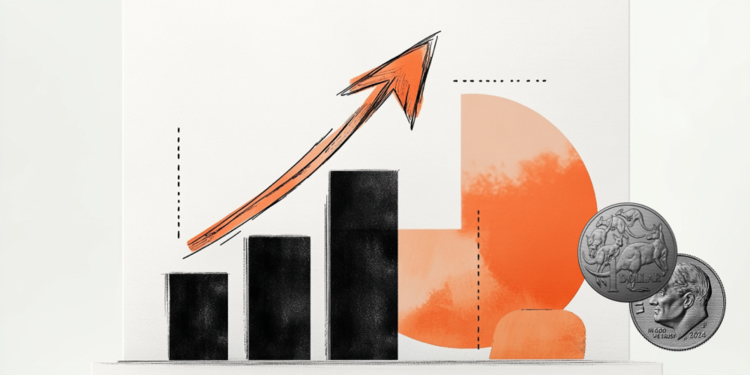- The EUR/USD holds steady near 1.1600 on Monday, consolidating Friday’s strong post-NFP gains.
- Sentiment in the Eurozone deteriorates, as the Sentix Investor Confidence Index drops to -3.7 in August, from 4.5 in July.
- US Factory Orders fell 4.8% in June, reversing May’s strong 8.3% gain and signaling a slowdown in manufacturing activity.
The Euro (EUR) holds firm against the US Dollar (USD) on Monday, consolidating Friday’s sharp gains after a weaker-than-expected US Nonfarm Payrolls (NFP) report fueled expectations that the Federal Reserve (Fed) will cut interest rates as soon as September. However, sentiment remains fragile and cautious around the recently announced trade framework deal between the United States (US) and the European Union (EU), which has drawn sharp criticism from several European leaders. The deal is widely viewed as one-sided and favorable to the US, raising concerns over its long-term implications for the Eurozone’s competitiveness.
At the time of writing, the EUR/USD pair is trading near 1.1557 during American hours, with price action largely rangebound as the pair struggles to break above the 1.1600 psychological barrier, amid cautious sentiment and a lack of fresh macroeconomic catalysts.
Adding to the cautious tone, the Sentix Investor Confidence Index for August showed a sharp drop in Eurozone sentiment. The data provider said its weekly survey of thousands of investors in more than 20 countries showed that the pact was a “deal that dampens the mood”, with Trump and the US viewed as “winners” at the expense of the Eurozone.
The headline index fell to -3.7 from 4.5 in July, its first negative reading since March. Both the current situation and expectations components declined sharply, with analysts pointing to tensions over the US-EU tariff framework as a major factor behind the gloomier outlook. “The tariff agreement is proving to be a real mood killer,” said Sentix managing director Manfred Huebner in a statement.
The US and EU struck a framework trade agreement on July 27, which will impose a 15% import tariff on most EU goods starting August 7, up sharply from the current average of 4.8%. While the agreement averted a more severe disruption, it avoided the 30% import duty previously threatened by US President Donald Trump under a self-imposed August 1 deadline.
Earlier on Monday, a European Commission spokesperson confirmed that the EU will suspend any retaliatory trade countermeasures against the US for six months. “The EU continues to work with the US to finalise a Joint Statement, as agreed on 27 July,” the spokesperson said, signaling that the deal is still under negotiation and not yet formally finalized.
On the US side, apart from the disappointing labor market data on Friday, the latest Factory Orders report added to the cautious tone surrounding the US economic outlook. According to data released by the US Census Bureau, Factory Orders slumped 4.8% MoM in June, following an upwardly revised 8.3% increase in May and beating expectations of a deeper 4.9% decline.
Looking ahead, Friday’s weaker-than-expected Nonfarm Payrolls (NFP) report has significantly shifted market expectations, with traders now pricing in a 85% probability of a 25 basis point rate cut at the Federal Reserve’s next policy meeting in September. The dovish repricing is weighing heavily on the US Dollar and could keep the Euro supported in the near term.
Euro FAQs
The Euro is the currency for the 19 European Union countries that belong to the Eurozone. It is the second most heavily traded currency in the world behind the US Dollar. In 2022, it accounted for 31% of all foreign exchange transactions, with an average daily turnover of over $2.2 trillion a day.
EUR/USD is the most heavily traded currency pair in the world, accounting for an estimated 30% off all transactions, followed by EUR/JPY (4%), EUR/GBP (3%) and EUR/AUD (2%).
The European Central Bank (ECB) in Frankfurt, Germany, is the reserve bank for the Eurozone. The ECB sets interest rates and manages monetary policy.
The ECB’s primary mandate is to maintain price stability, which means either controlling inflation or stimulating growth. Its primary tool is the raising or lowering of interest rates. Relatively high interest rates – or the expectation of higher rates – will usually benefit the Euro and vice versa.
The ECB Governing Council makes monetary policy decisions at meetings held eight times a year. Decisions are made by heads of the Eurozone national banks and six permanent members, including the President of the ECB, Christine Lagarde.
Eurozone inflation data, measured by the Harmonized Index of Consumer Prices (HICP), is an important econometric for the Euro. If inflation rises more than expected, especially if above the ECB’s 2% target, it obliges the ECB to raise interest rates to bring it back under control.
Relatively high interest rates compared to its counterparts will usually benefit the Euro, as it makes the region more attractive as a place for global investors to park their money.
Data releases gauge the health of the economy and can impact on the Euro. Indicators such as GDP, Manufacturing and Services PMIs, employment, and consumer sentiment surveys can all influence the direction of the single currency.
A strong economy is good for the Euro. Not only does it attract more foreign investment but it may encourage the ECB to put up interest rates, which will directly strengthen the Euro. Otherwise, if economic data is weak, the Euro is likely to fall.
Economic data for the four largest economies in the euro area (Germany, France, Italy and Spain) are especially significant, as they account for 75% of the Eurozone’s economy.
Another significant data release for the Euro is the Trade Balance. This indicator measures the difference between what a country earns from its exports and what it spends on imports over a given period.
If a country produces highly sought after exports then its currency will gain in value purely from the extra demand created from foreign buyers seeking to purchase these goods. Therefore, a positive net Trade Balance strengthens a currency and vice versa for a negative balance.







